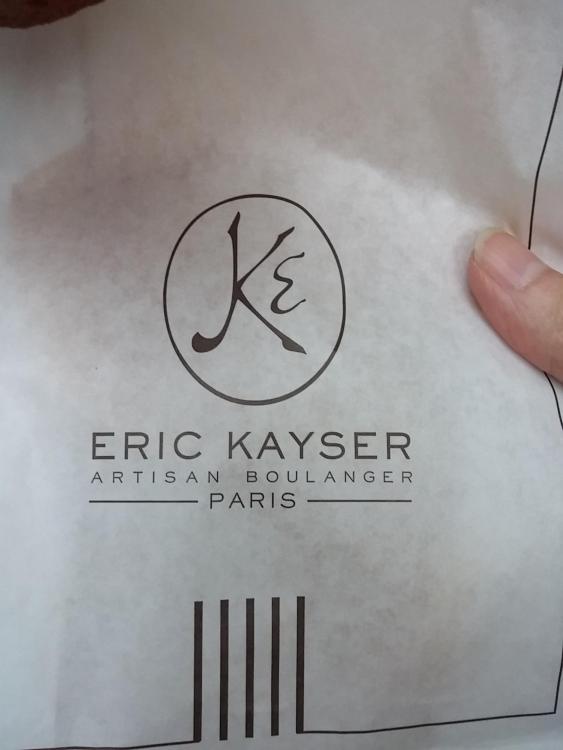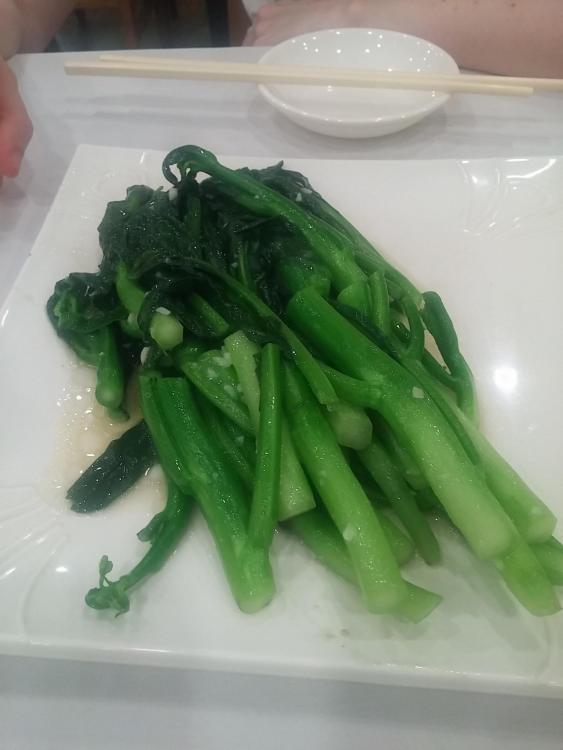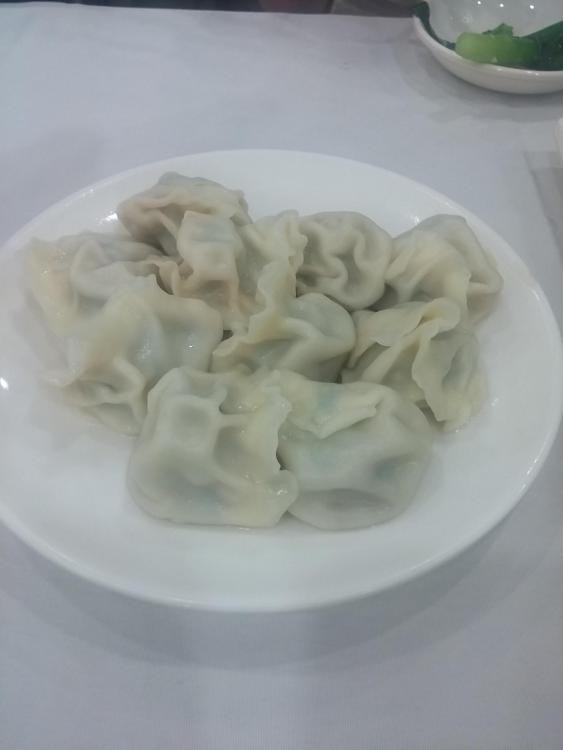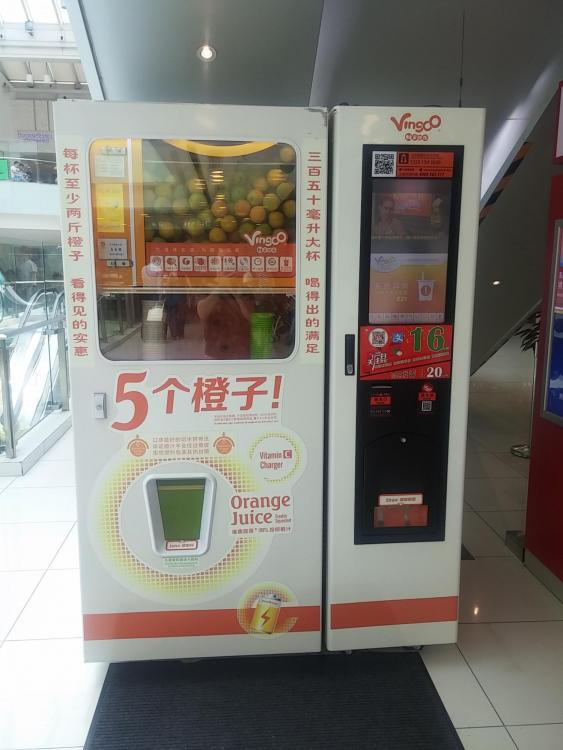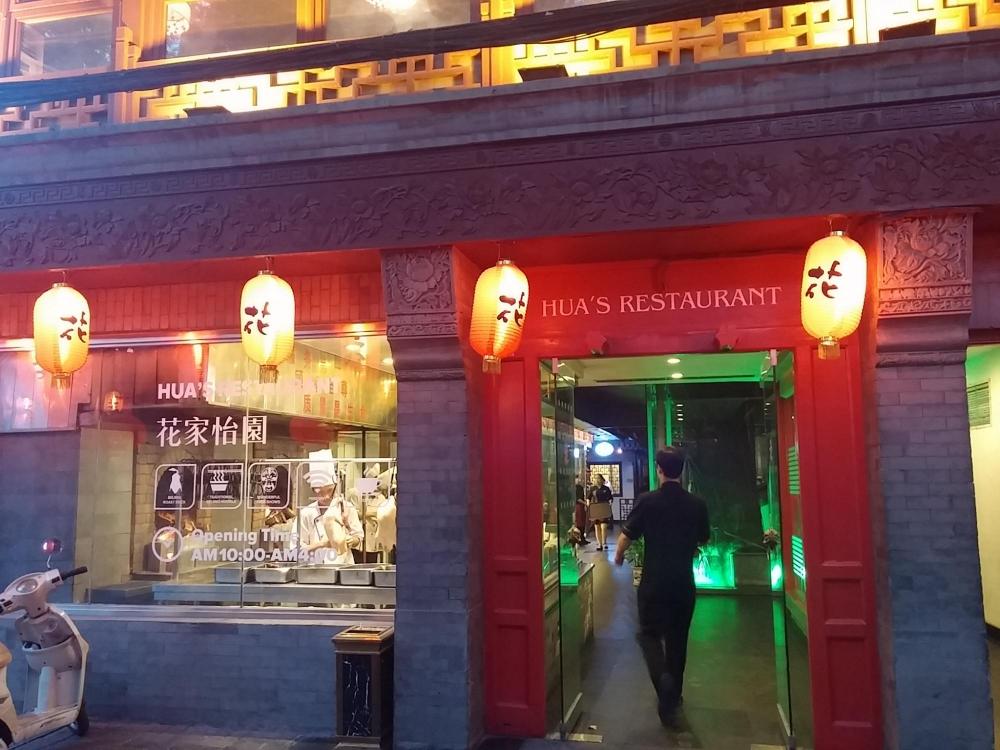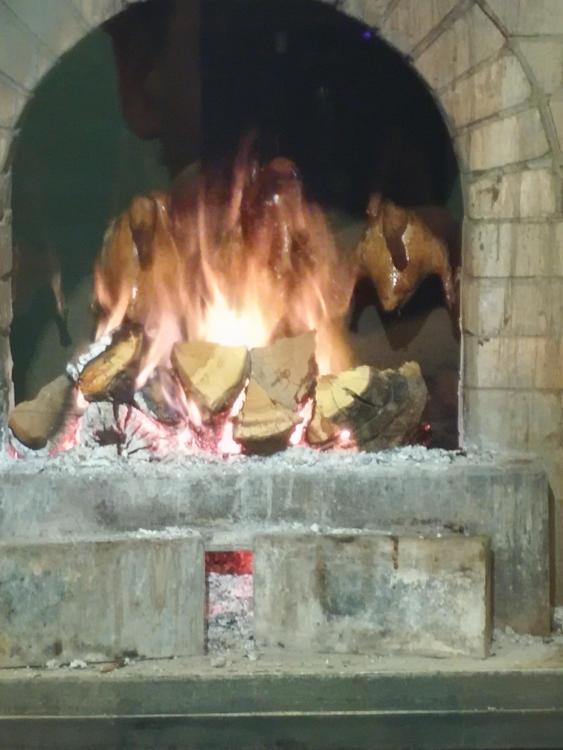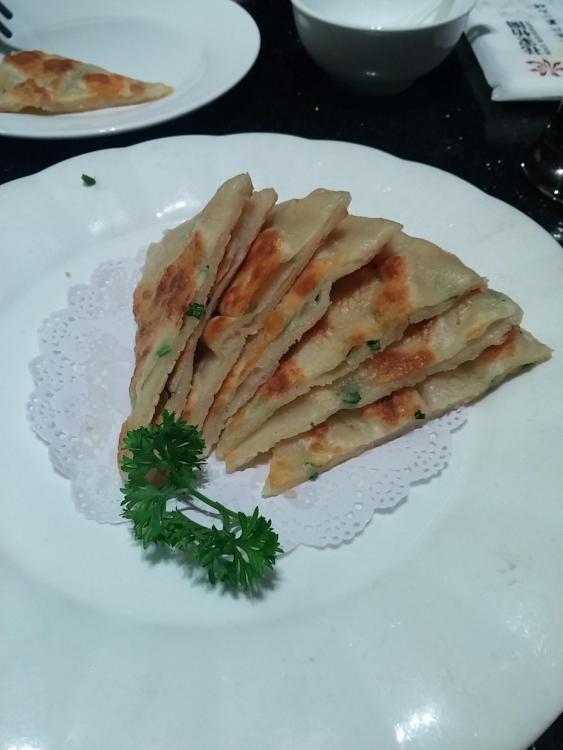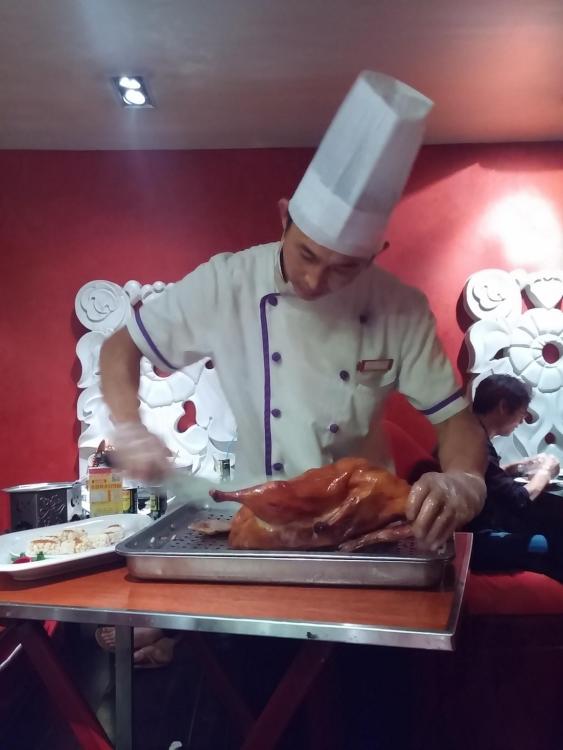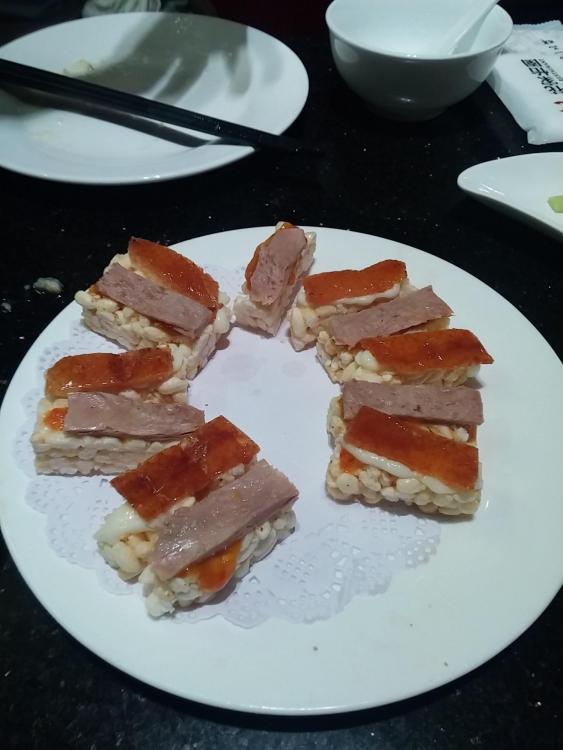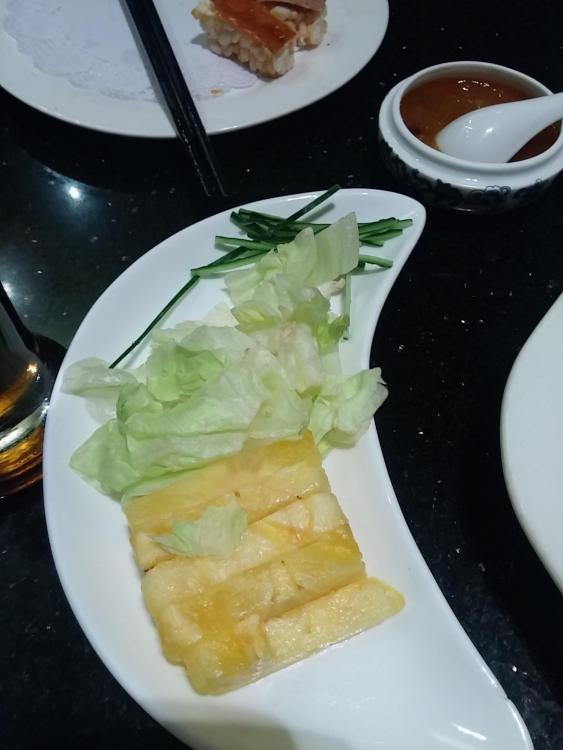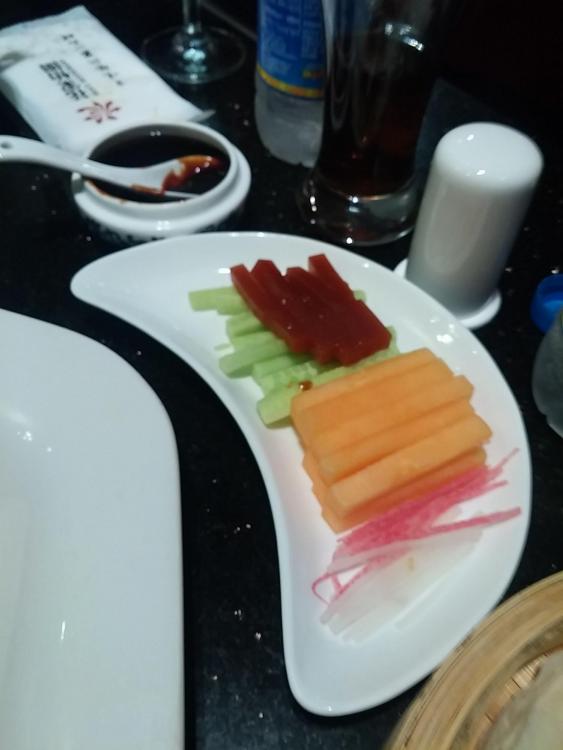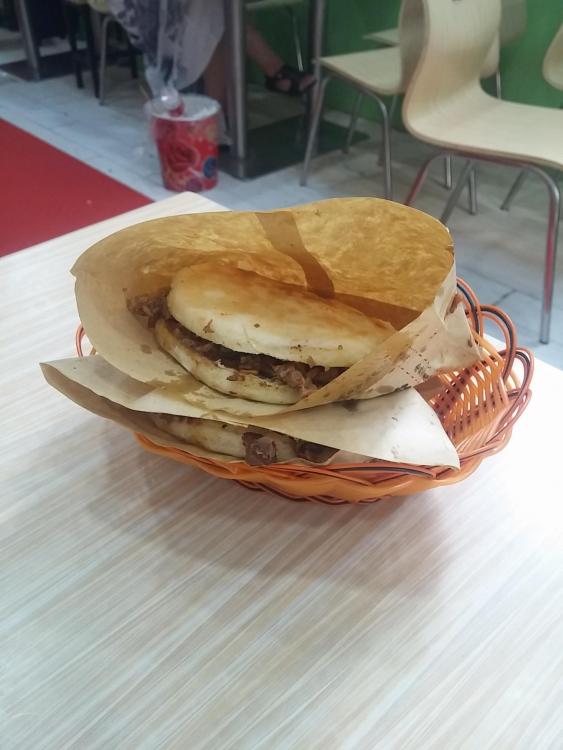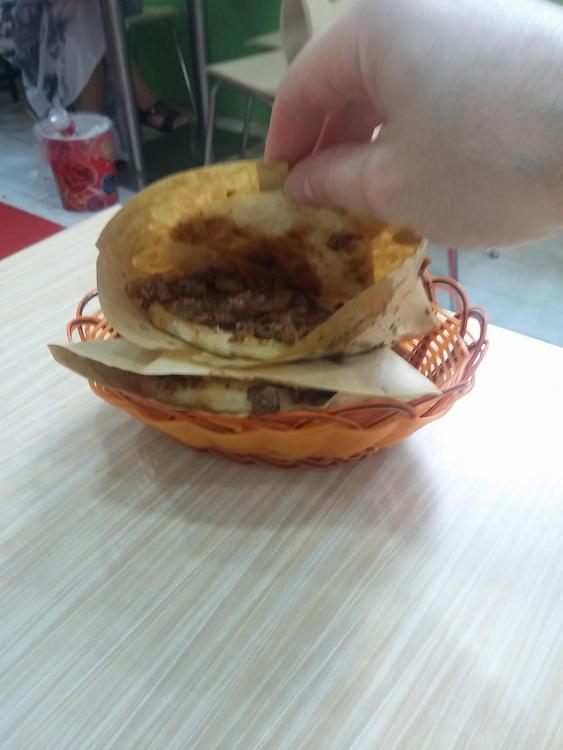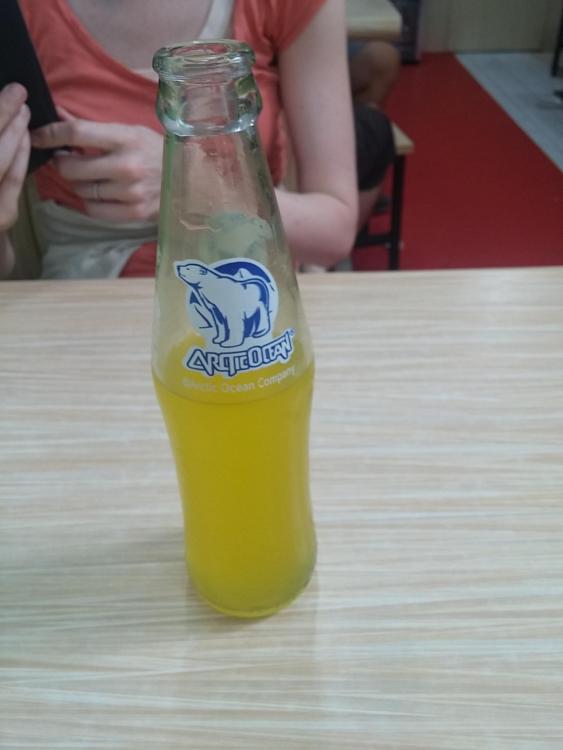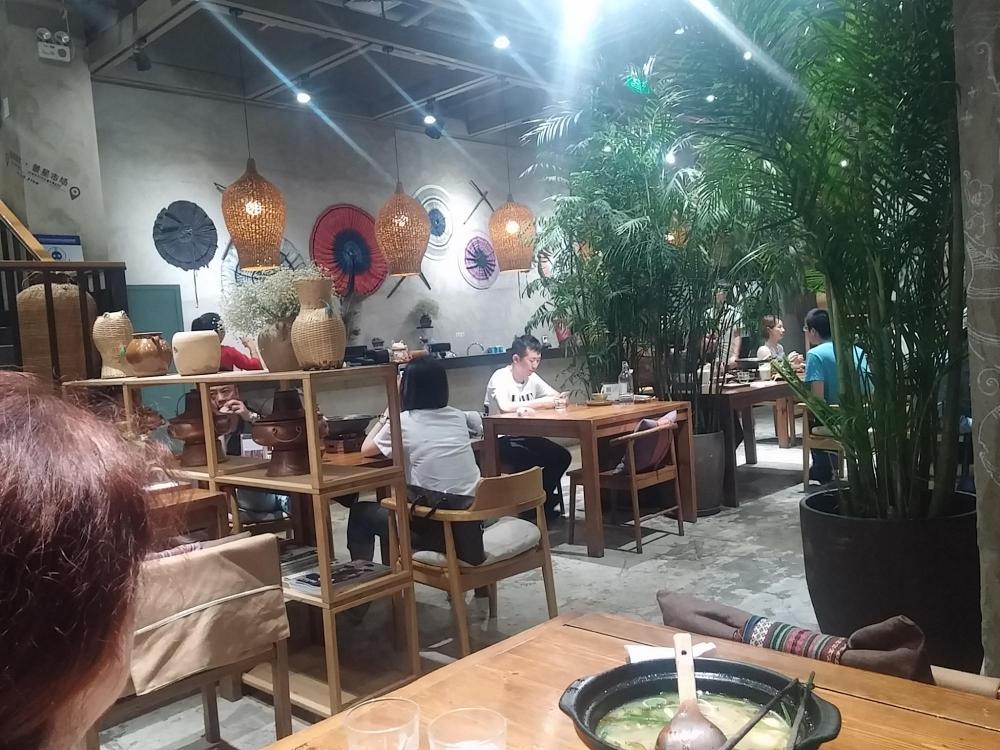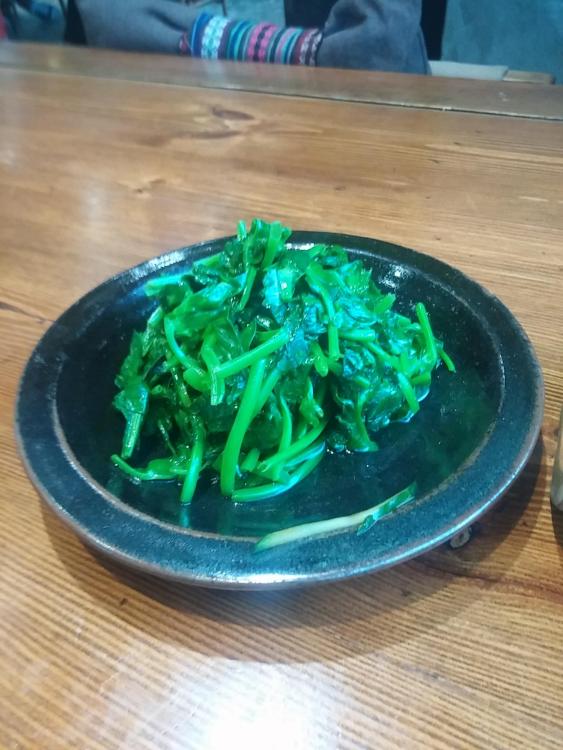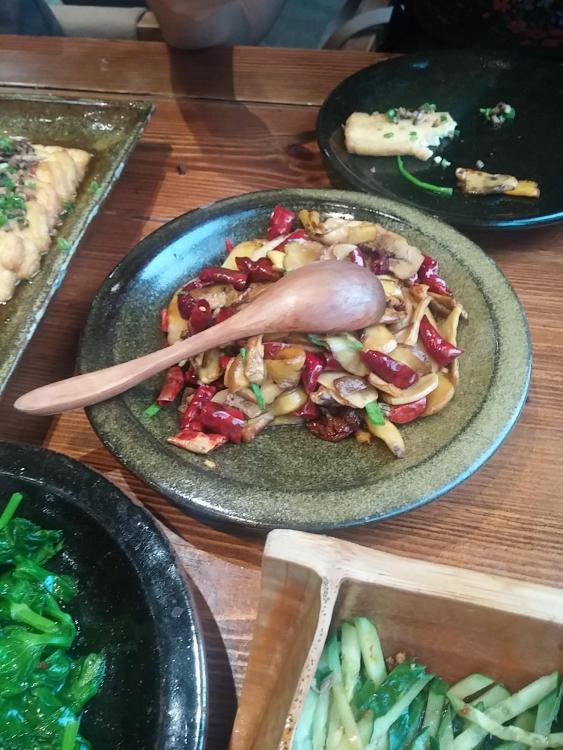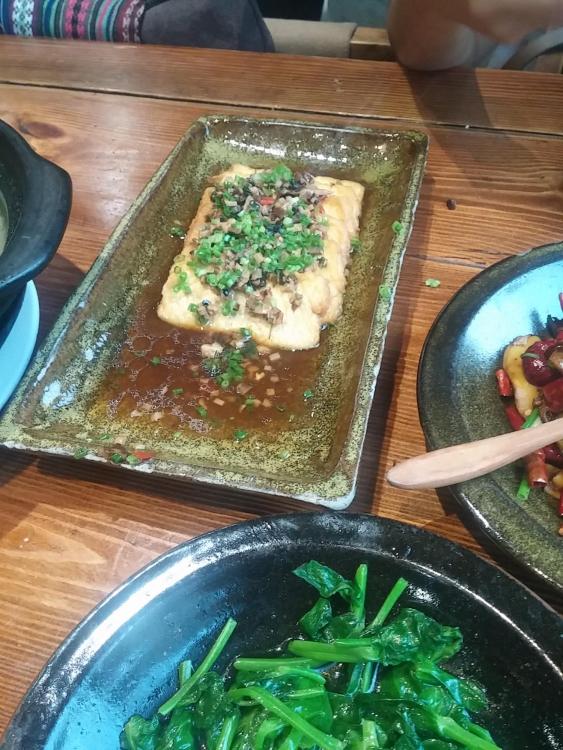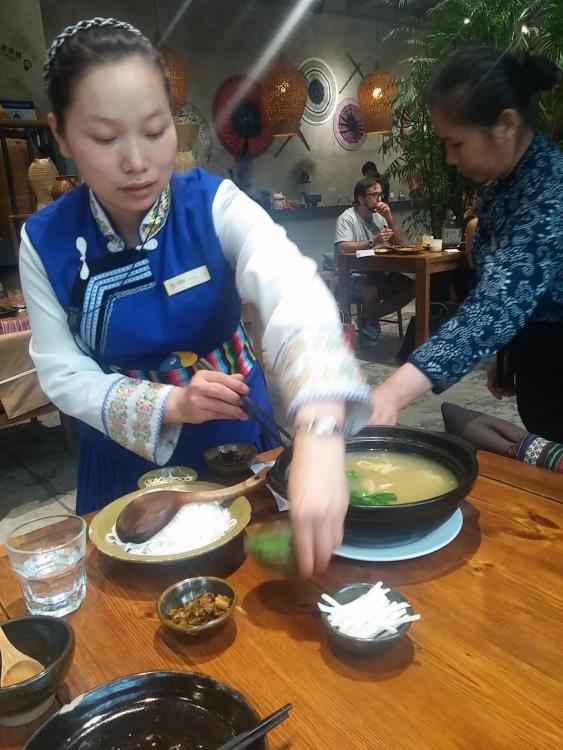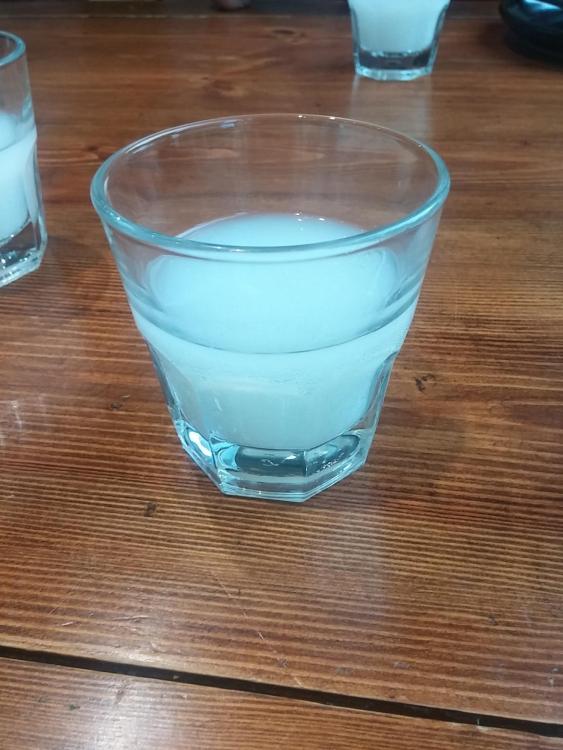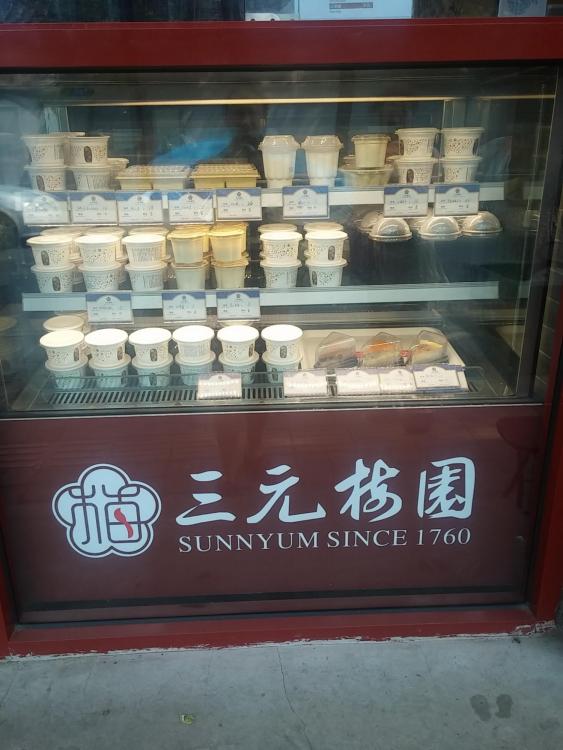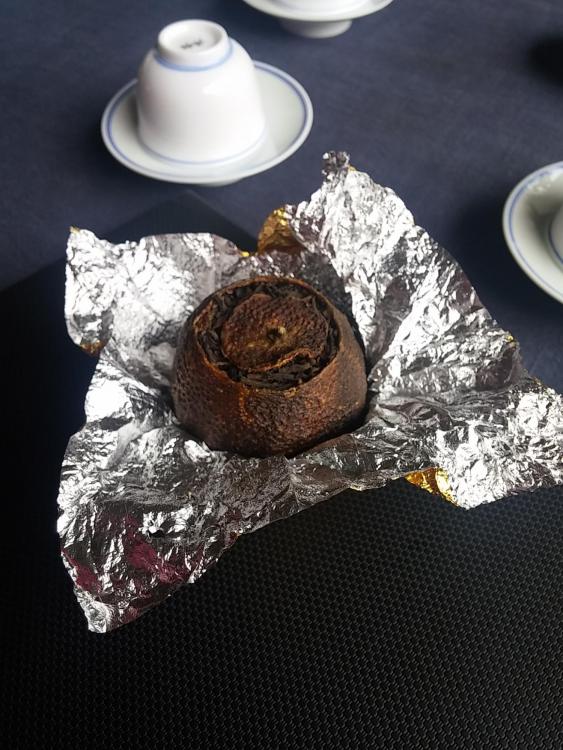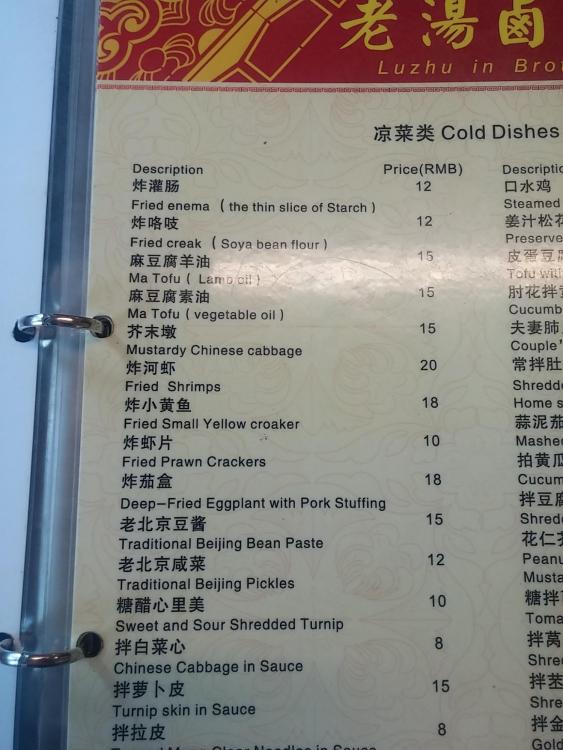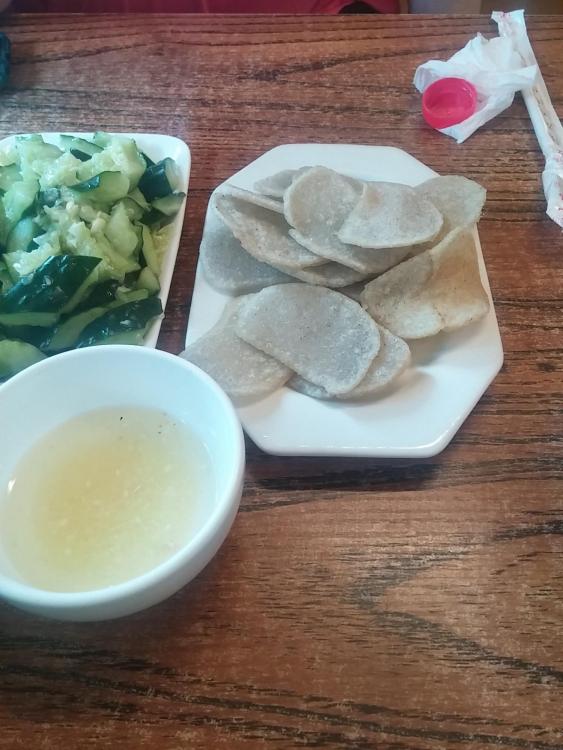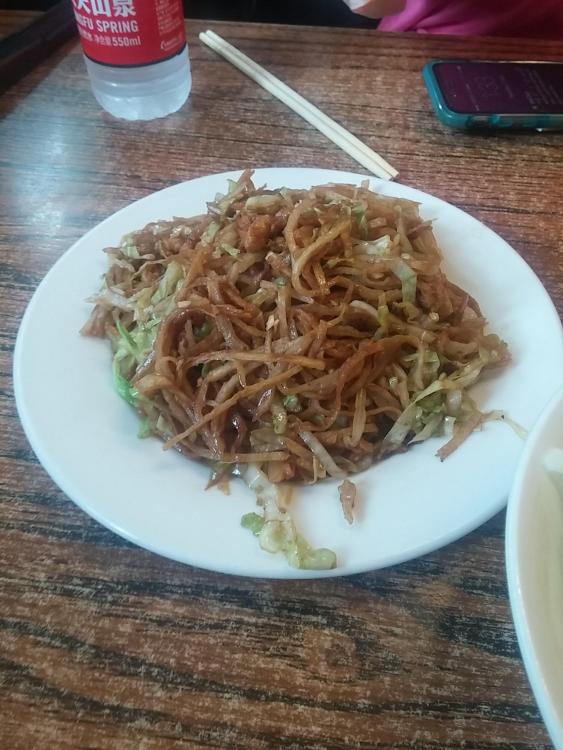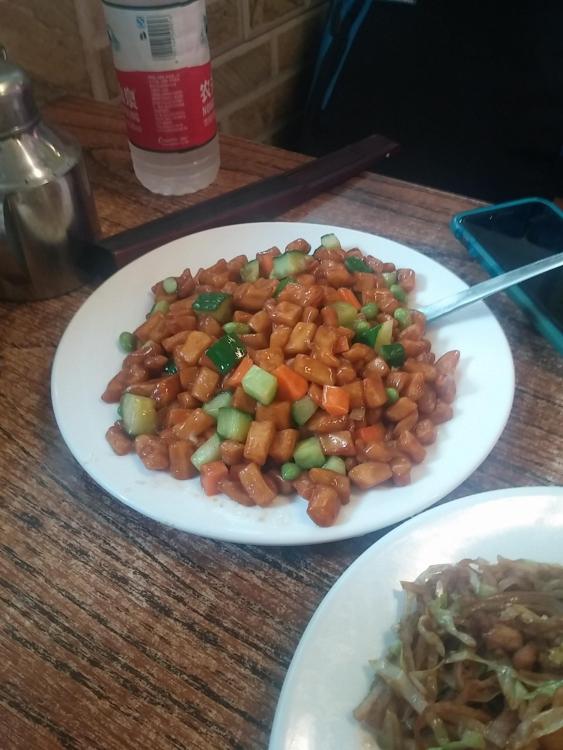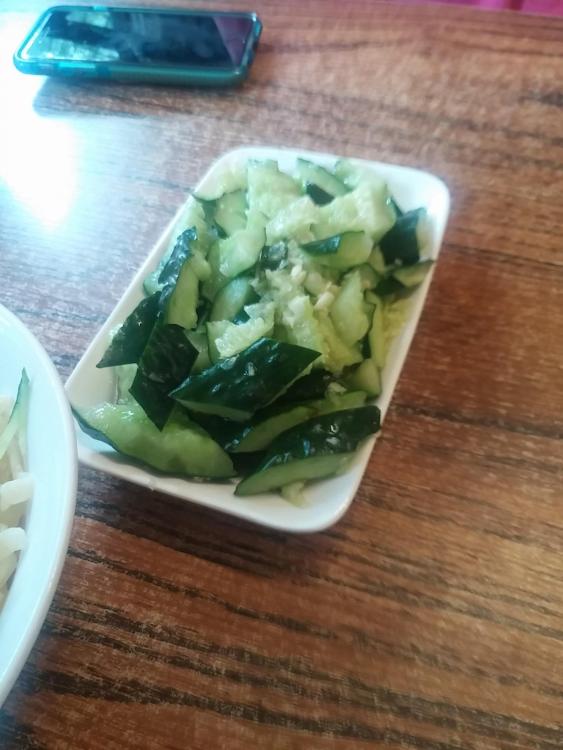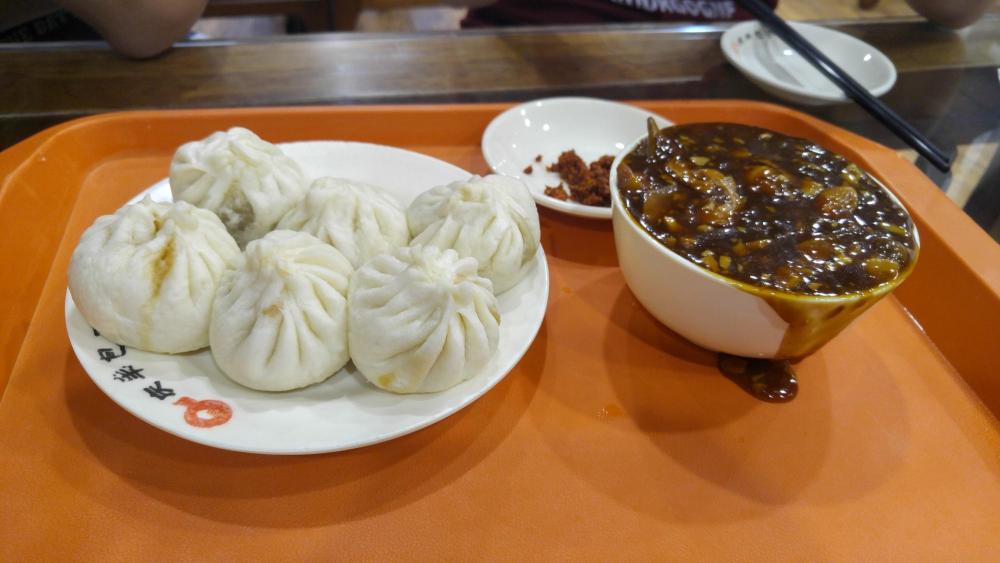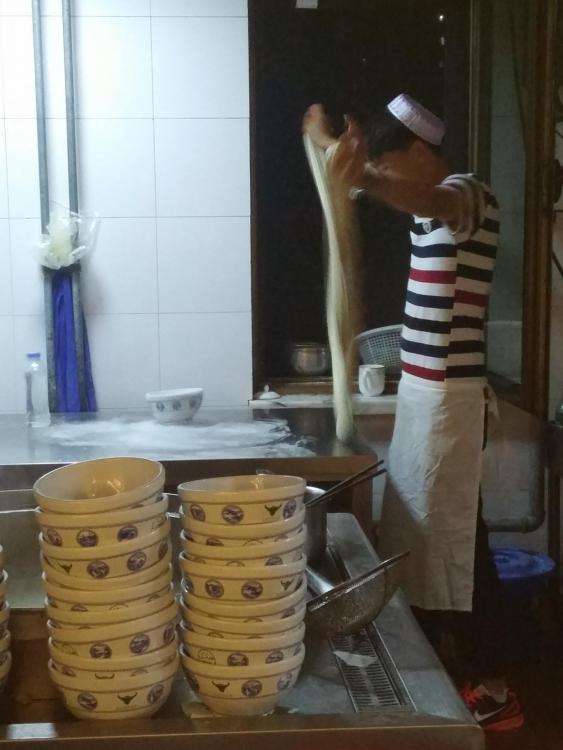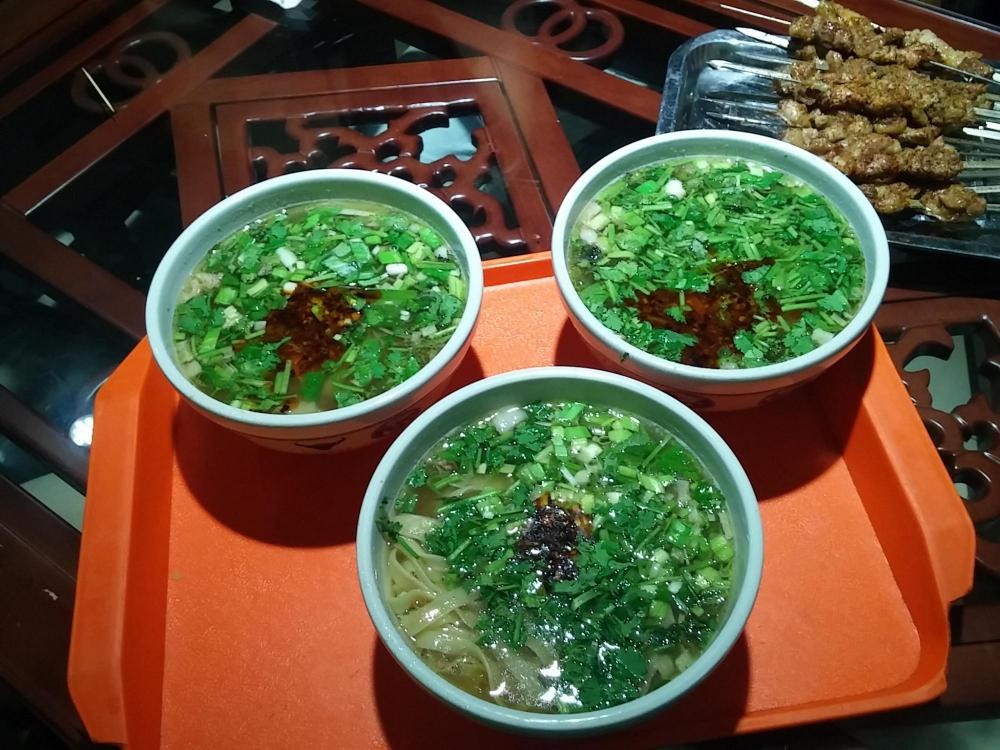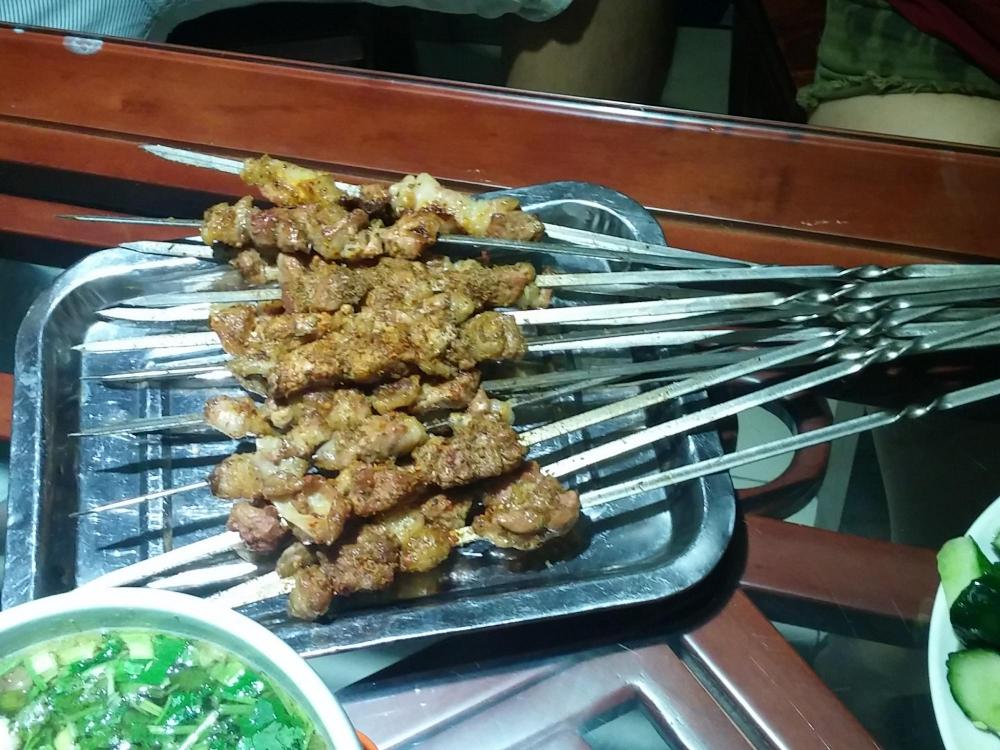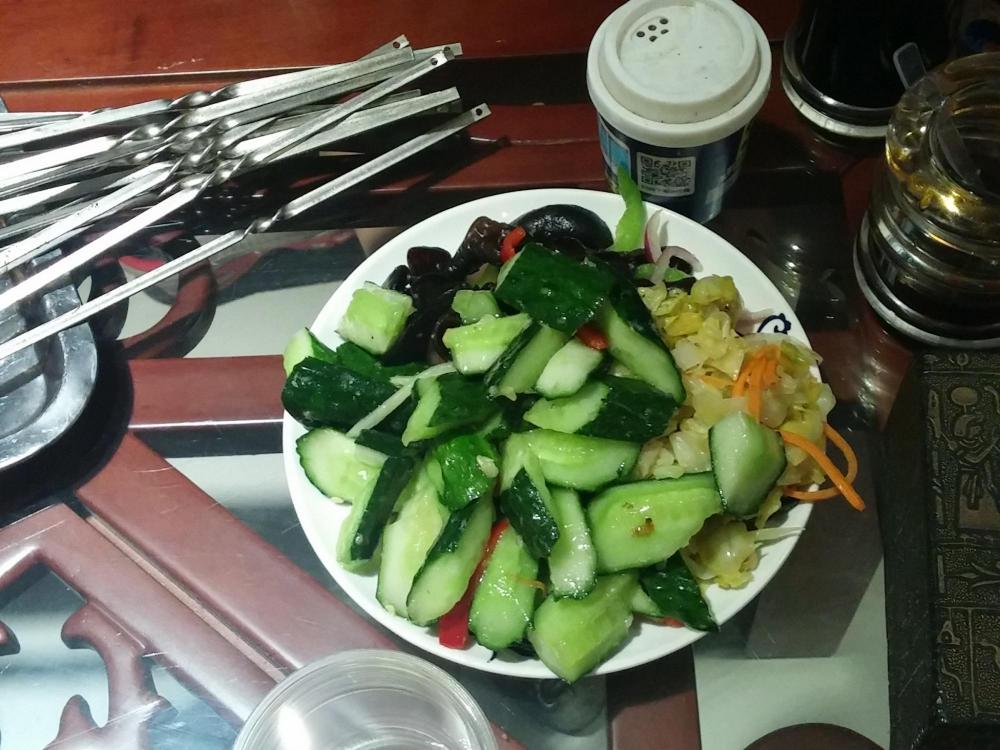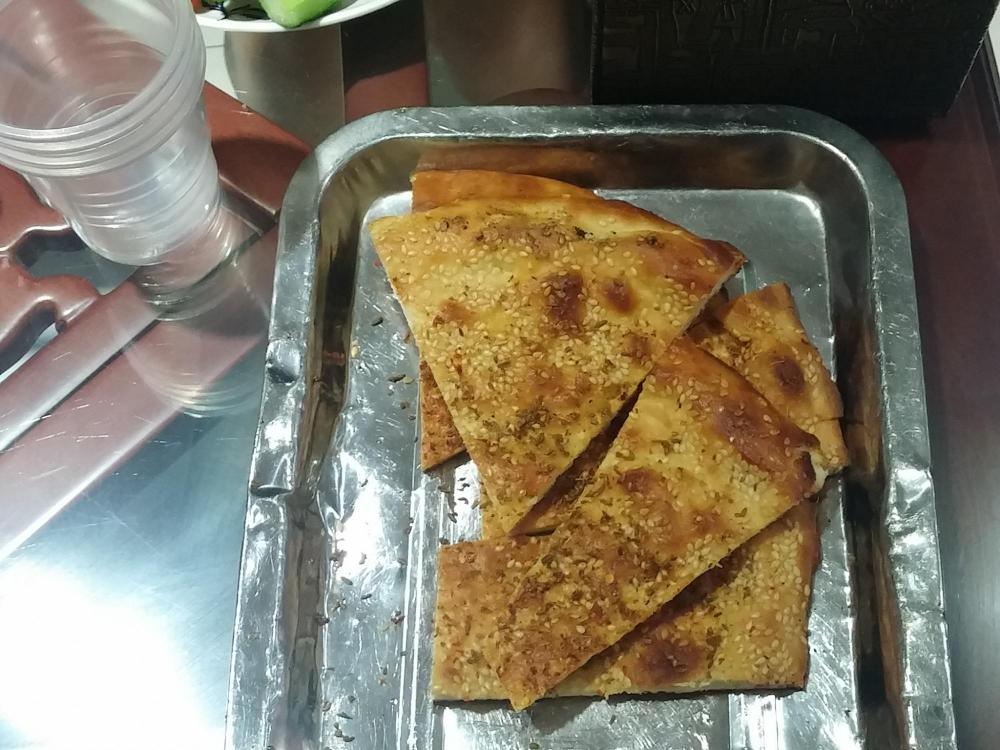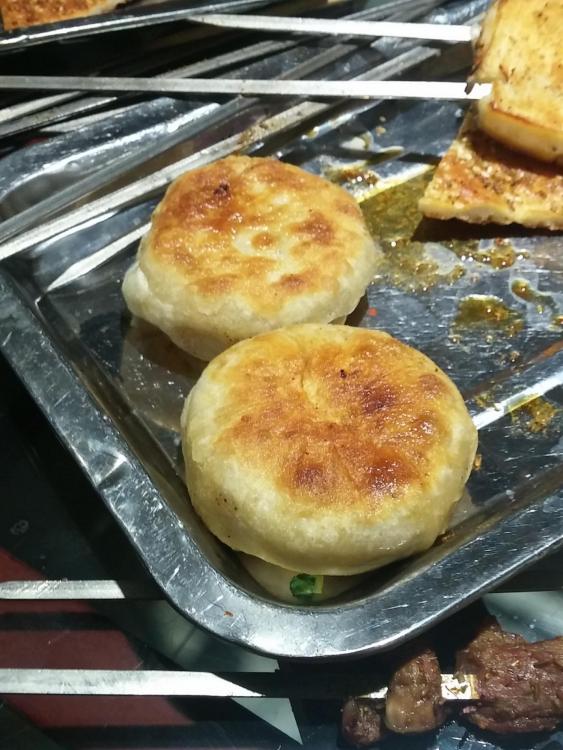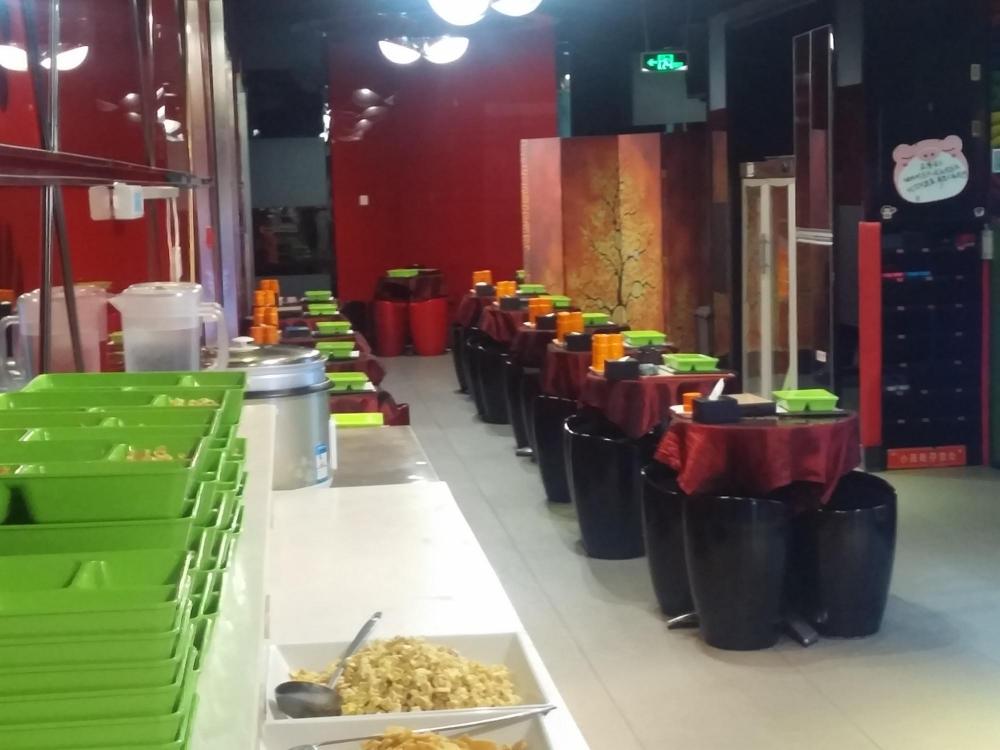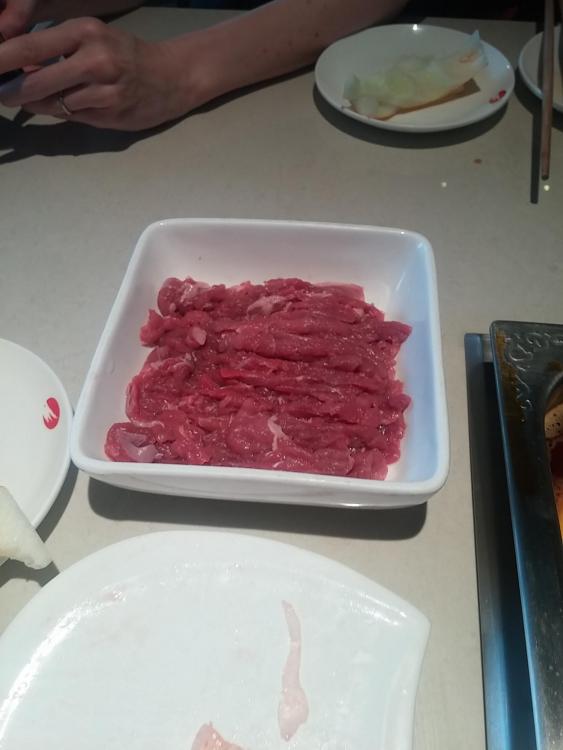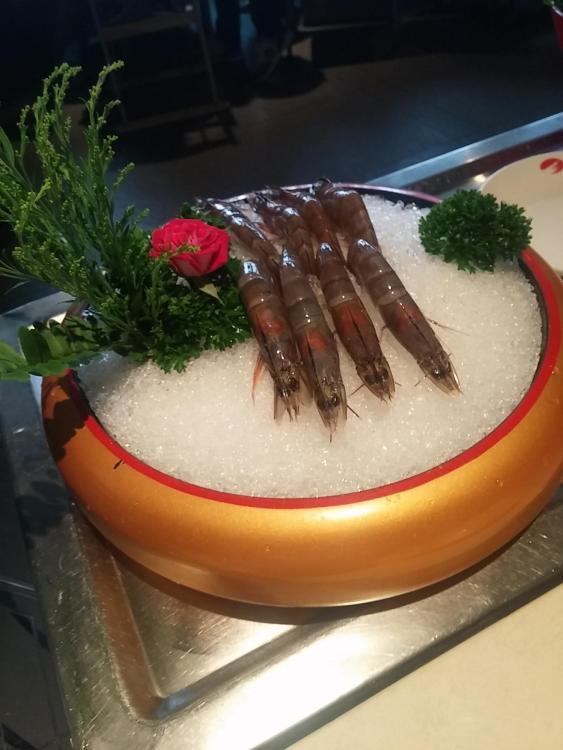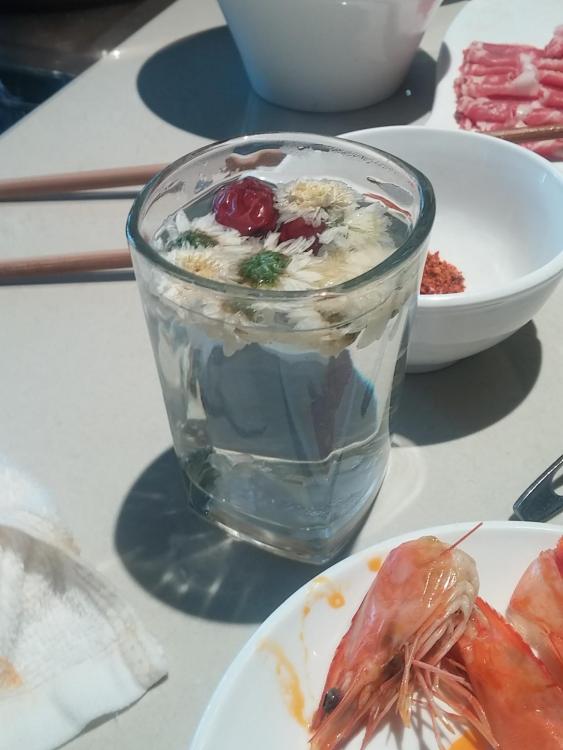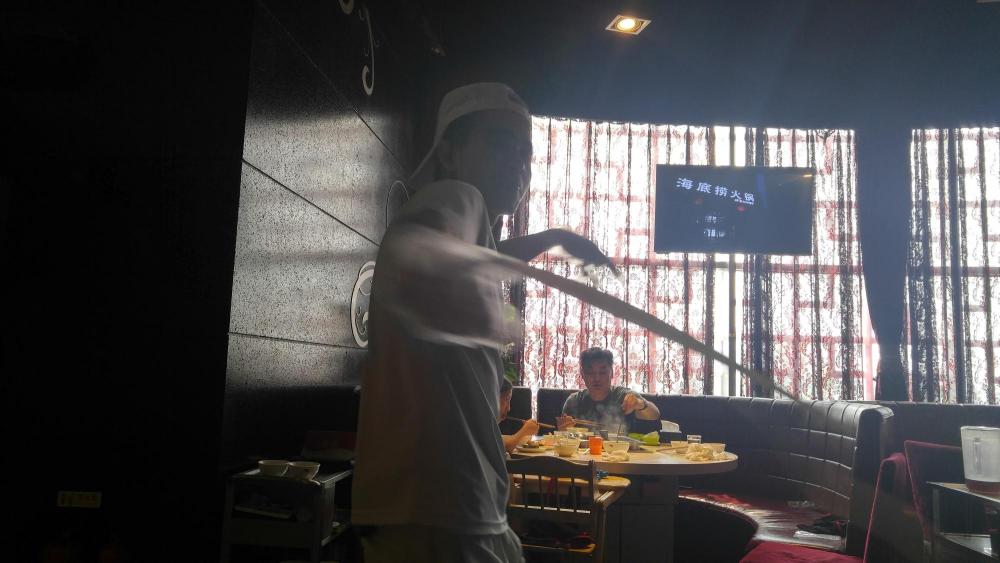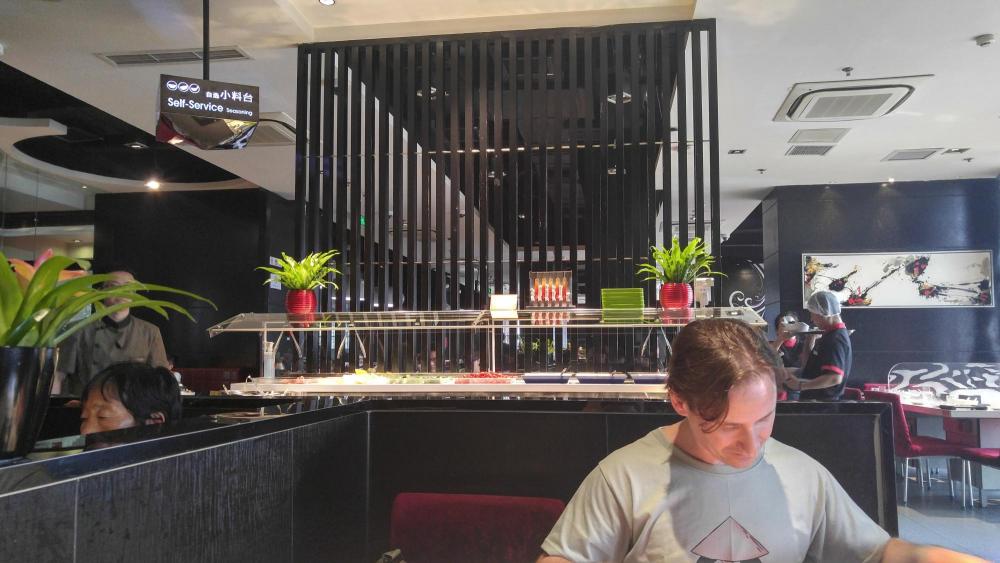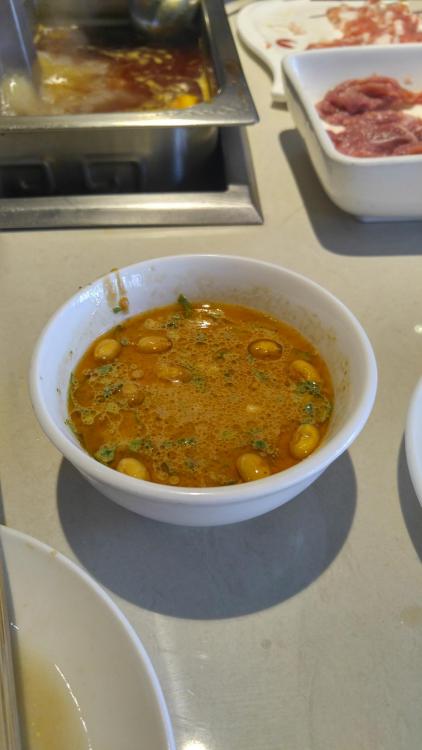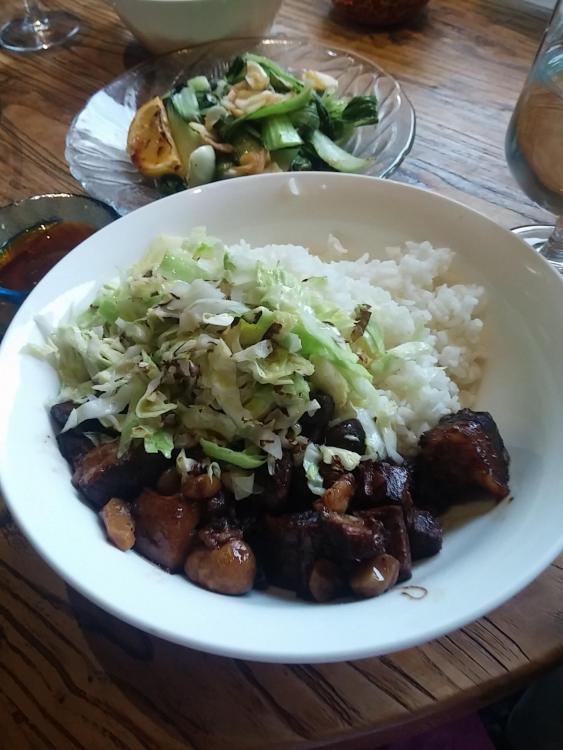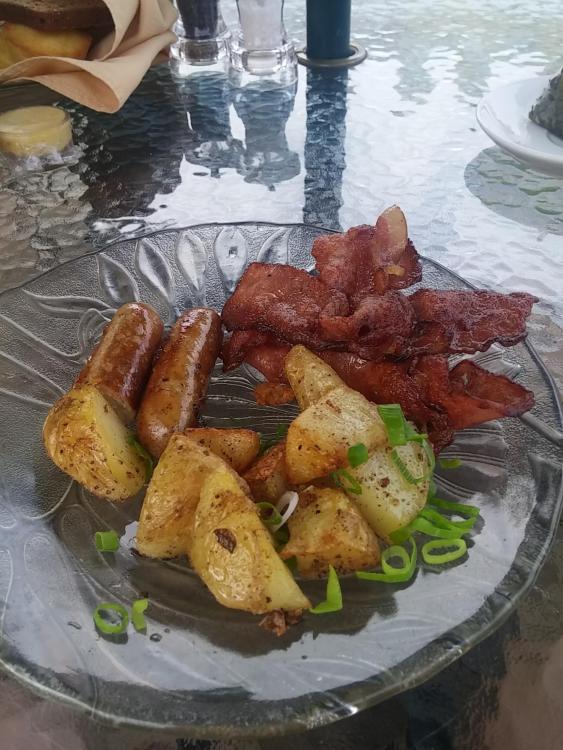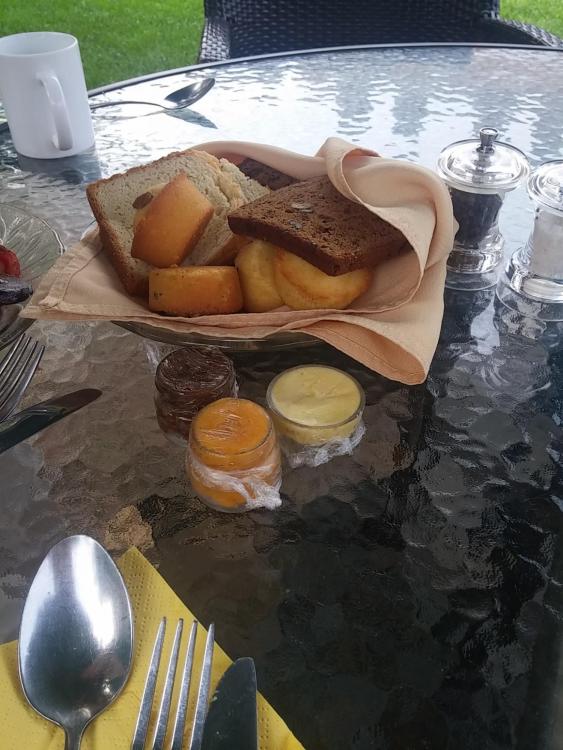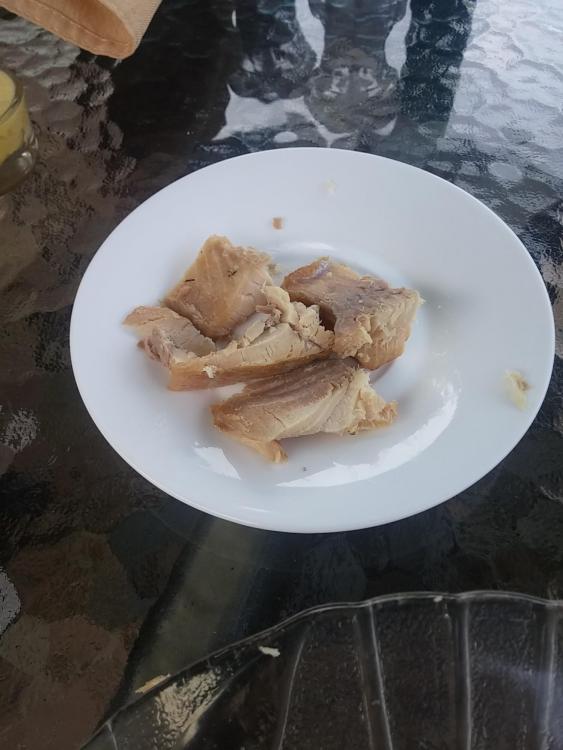
KennethT
participating member-
Posts
6,866 -
Joined
-
Last visited
Content Type
Profiles
Forums
Store
Help Articles
Everything posted by KennethT
-
no sauerkraut???
-
I don't know if this is the proper topic to put this up, but my wife and I were wandering around in the nice weather tonight and I picked up one of these French little beauties, in NYC... Pistachio financier... I know it looks more like a muffin, but it had a really intense pistachio flavor, and the inside was a nice pale green color. Very tasty!
-
Is that right??? Or one-time-use-only!
-
Excellent timing indeed. The one you have in your hand (I assume that's your hand!) is the size of what we had...
-
I don't think I'd do anything in it that required washing the inside afterwards (like rendering fat) - hard to wash through the small neck!
-
@liuzhouVery nice... it seems your rougiamo was a big one cut into quarters. Most of what we saw were small - about the size of a traditional hamburger, but made with that flatbread. Do you know which is more traditional?
-
I don't know what caused the haziness... it was beautifully clear our first day, and then proceeded to get progressively hazier as the days went on (with no rain)... Beijing is known for bad pollution, so I wouldn't rule that out, but I can't say that we were uncomfortable or had any issues breathing, and not that many people were wearing pollution masks...
-
@DerynWe actually brought nothing back from this trip... I think it's a first. I have black vinegar at home that I got in Chinatown in NYC... I don't know if there's a major difference in brands anyway - wherever we saw condiments (basically in most local restaurants) they were always in non-descript bottles, so I wouldn't even know the name of a superior brand if I saw it - plus, the fact that the writing would be all in Chinese would be a problem as well since I can't really read it.
-
The next day was the day we were leaving... We thought we had plenty of time since our flight left at 6PM, and we were checking out of the hotel at 3, but we wound up running into the hotel's restaurant manager on the street the night before on the way home from dinner (she was just leaving from HaiDiLao!) and we wound up chatting with her the next morning about traveling, life in the US/China, misconceptions from the media, etc. for about an hour at breakfast. Then, we tried to return our stored value "top-up" subway cards at the local subway station, but it turned into a wild goose chase as each person we saw told us we had to go to a different window in a different station... After about an hour of running around, we decided to just cut our losses and forget about it... the deposit on the cards was 20 Yuan each (less than $3 each), and we each had about 35 Yuan (about $5 each) in left over fares. So, all in all, not a huge loss, and if I knew it would be such a hassle, I wouldn't have even bothered trying in the first place. By the time we finished packing, we only had time for a pretty fast lunch, and we definitely didn't want to risk taking the time to trek around the city, so back to the mall we went! We figured it would be a fitting end to the trip to have some final jiaozi at the same place we went the first day. I think our waitress remembered us, since after I had ordered the jiaozi, she turned the page to the menu to the veggie section and pointed to the Chinese writing for the gailan (jie-lan) as we had a minor miscommunication about it our first time there. Who am I to refuse? Pork and coriander (cilantro) Mutton and scallion. I preferred to use black vinegar with roasted chili in oil as a dipping sauce... my wife preferred the standard soy sauce. So, that's it! A truly enlightening trip - not so much from a food perspective (even though the food was great) but it was great to have some long talks with a bunch of different sets of peers to get their perspective on what it's like growing up and living in a country that's been through such rapid and dramatic change in the last 30 years. And to do some sightseeing on some things that my wife and I have dreamed about since we were kids.... I'm glad we got a 10 year visa (it was the same price as a one time visa) as this definitely will not be the last trip to China!
-
Evidently, people in Beijing love fresh squeezed orange juice. During our week, we saw people squeezing oranges all day at various street corners throughout the city: And in one mall, we saw this fresh squeezed orange juice vending machine!
-
After lunch, we went to walk around BeiHai Park... like most things in Beijing, it is huge.... but beautiful. There is a large lake where you can rent a boat, and an island that has a large "dagoba"... as hard as I tried, I did not see Yoda.... More stairs to get up to Dagoba... That evening, we went for our last dinner - so, we wanted to have another Peking Duck experience. Fongyee had recommended a more casual place - called Hua's Family restaurant, which is always crammed with locals... and I could see why - the duck was excellent - maybe not as good as 1949's which was superb and extraordinary - but excellent... and also 1/3 the price! Scallion pancake Gailan - ordering this actually brought up a very interesting topic. Our waiter spoke excellent English (later in the evening, he gave us his card which said that he moonlights (or maybe the waitering was the moonlighting?) as a translator. When I asked for it (I called it "GUY-LAHN", as it was called in Hong Kong and in NY), he had no idea what I was talking about, so after discussing it in English, we determined that what I wanted, he called "JEE-EH-LAHN" in Mandarin... I had always heard that Cantonese (as is common in HK and NY) sounded very different from Mandarin, and this was a pretty good example of that. One thing that was interesting about this place was that they put the first few slices of meat and skin on some puffed rice to be had as snacks - like an hors d'oevre..... There was also some kind of sauce between the rice cakes and duck - it almost tasted like a horseradish mayo! They served the duck with some interesting accoutrements: Pineapple, iceberg lettuce, cucumber skin Cucumber, watermelon radish, scallion, melon, and some kind of jelly that reminded me of Thanksgiving Cranberry Sauce (the kind in the can), but it was more firm - almost like a pate de fruit.... Fongyee also told us that while 1949's duck is excellent, they do not use the traditional Beijing hoisin sauce... She said Beijing hoisin should not be sweet (which 1949's was) - and indeed, this hoisin was very different - it almost had a medicinal herbal flavor - it slightly reminded me of the herbal flavor you get in some Chinese Medicine (which unfortunately I had experience with a few years ago...) But, it went very well with the duck!
-
@liuzhouThanks for that link... I seem to have missed that topic! Your version looks great!
-
Thanks @liuzhou. For some reason, every guide book and blog lists them as something you have to have while in Beijing. Maybe just because it's from the North (although much further West)? ETA: Also, I was under the impression that the Xi'an version was typically made from mutton or lamb (with lots of cumin), while the Beijing version was pork - with a more hoisin like sauce.
-
The next day was our last full day in Beijing. We went to see the Drum and Bell towers which are just north of the Forbidden City. Both require a large amount of stairs: Both the drum and bell towers were the ancient means for telling time and broadcasting the current time to the city. Extra large bell! Drums.... several times every day, on the half hour, the drummers come to perform the ceremonial percussion that was centuries old. After that, we decided to go into a local restaurant in the area between the towers and BeiHai park... I had realized that one of the Beijing specialties we had not tried was something called rougiamo, which is something like a sandwich filled with chopped pork and sauce. As we were wandering a hutong area, I saw a restaurant with a few photos on a sign outside, showing this sandwich... it was busy, so we decided to go in... This was actually taken after we had lunch, when we first went in, there was only 1 table available. There was no english menu here, and no one spoke english, and the menu had no photos.... so I relied on the Waygo app I downloaded, which treated us very well! But I couldn't find that sandwich on the menu, so I took the waitress out to the front of the shop and pointed at the sign! No problem... Sandwiches... notice the garbage can in the background... there was one for each table. Interior shot... I just had to get another one of those fried pancake scrap dishes... we loved it! This one tasted like it had extra spices or something... it was really addictive. This is like the Chinese version of Mountain Dew... brought me back to my college days!
-
That evening, we were to meet up with the last of my wife's friends in Beijing. We wound up going to a Yunnan restaurant in the Sanlitun area. From what I gather, Yunnan is in the south, and some of the dishes almost seemed Vietnamese in style. Here's a photo of the place, located in... yep, another mall! Beef rolls with mint and chili, on a bed of shredded cucumber Sauteed pea shoots This was very interesting - fresh porcini mushrooms sauteed with chilis! Evidently, porcini mushrooms are common in this region Sauteed tofu with leek flower This was interesting... a tableside presentation - The stone bowl was very hot, to which they added hot chicken broth, then thinly sliced raw chicken (which cooked in the broth, various vegetables, and rice noodles. This was like comfort food - the broth was fantastic - really chicken-y. This was also interesting - it's a lightly alcoholic rice wine drink. It was slightly sweet, and had a touch of spritz. It was actually very refreshing. All in all, a great meal, and great company for our last night out with friends. I really enjoyed meeting and getting to know all of my wife's friends. It's fascinating to be able to have in depth conversations about their culture, dreams, aspirations, government policies... it seems that no matter how far people can live from one another, in the end, people are so much more similar than we are different.
-
Ha!!!! So, out of curiosity, how should that dish be properly translated?
-
After lunch, we were walking through some hutongs to get to the next destination when we stopped here: Fongyee said that this place was a staple in Beijing, as it had been around forever... we got Some kind of milk custard - it came in various flavors, but we got the plain one just to see what the base tasted like. This is a very refreshing drink on a hot day - a sweet and sour plum drink... it was so good, my wife and I would seek it out on the days following too. Our next stop was here: This is the Confucius Temple - not a religious temple, but a place where students go where students can "pray to Confucius" so they can do well on their exams! As both Fongyee and my wife have taken lots of exams recently, they can both relate to this place. This is a great temple - it's very serene inside, and not crowded, and there is plenty of shade... a good place to relax and organize one's thoughts. There is also a great old Cypress tree that's over 700 years old After our temple visit, we wandered through some more hutong looking for this tea house: This is a great little place amidst the maze of hutongs. It's very peaceful, and they have an amazing set of teas.... We got an aged white tea: And a pu'erh that had been in an orage (maybe tangerine) peel... The owner of the tea place also provided us with a bunch of snacks (after that lunch and the custard, there was no room! my wife and I felt bad that we barely touched the snacks) Thank you @Fengyi for your immense hospitality and generosity, and for taking so much time from your very busy schedule to hang out with us. Definitely one of the highlights of the trip!
-
Immediately after breakfast the next morning, we made the decision to head out to the Lama Temple (or YongHeGong) which is the largest Tibetan buddhist temple outside of Tibet. We decided to go there that morning because we didn't have that much time before we were meeting another of my wife's friends for lunch, who was meeting us at our hotel. Since YongHeGong wasn't that far from a subway station on the same line as our hotel (also not far from the station) and we didn't have to change lines, we knew we could get there and back and have enough time to see it without being rushed. I always like seeing Buddhist temples - they're very different from seeing western religious sites. In the west, you can see a church or cathedral, but the buddhist temples are a whole complex - courtyards, various buildings, etc. So we get to the exit of the YongHeGong station, and of course, don't know which way to walk - but this time, it was a bit easier... just a couple of sniffs and we knew... it was the scent of incense. Here's the gate at the entrance - very ornate as usual: Once inside the temple, we knew right away why we could smell it from several blocks away - this temple (unlike others we've seen in other countries) provides a free bundle of incense sticks with the admission price - and people had no problems seemingly lighting them all at once! Once we got inside, it looked like a scene from a forest fire! This photo doesn't really even do it justice.. the whole courtyard was smoky! There are several buildings with their own buddha statues, but by far the most impressive was the last one, with this HUGE statue 3 stories tall! So, here's a funny story regarding my wife's friend. A few months ago, I was doing my research for the trip, and of course, the first place I look are any Beijing specific threads on eGullet. Unforunately, there hadn't been any active posts in quite a few years (the Beijing Dining thread was started in 2003), but the last active poster was in 2009-2010... This post: and those around it were a great starting point to my research... one thing that stuck with me was the description of Quanjude peking duck, and how the only one worth going to now was in Science Park... Anyway, we meet my wife's friend, and pretty soon I start getting the feeling that there's something familiar... She has such a great enthusiasm, and just the speech pattern alone get me thinking, and then, she mentioned something about the duck place in Science Park! Immediately, I think "holy crap - what a coincidence!!!" What are the odds that my wife would become friends with a woman from Beijing while in Verona, Italy, and that was the same person whose posts I had been reading on eGullet a few months later! This was the start of a great day, and one of the highlights of the trip, for me. We wound up spending the majority of the afternoon with her - she was so incredibly generous with her time, energy and boundless enthusiasm! Here's the first place we went: They had a lot of Beijing specialties here... but this is my favorite - even though we didn't order it: Then again, maybe we did order the Fried Enema - as we got this plate of fried starch with dipping sauce: This was lovingly referred to as "Beijing spaghetti" - hand pulled noodles with I think a bean paste sauce... Mixed all together, it was awesome... This was my wife's favorite: This is pieces of pancake that have been sliced and stir fried. Absolutely delicious.. Stir fried dough nuggets Knife-peeled noodles in soup Cucumber salad
-
We didn't get to do much sightseeing after lunch, as we had plans to meet my wife's friend and her husband for dinner in a residential area pretty far away from the center of the city in the early evening. We tried to see BeiHai Park quickly, but we underestimated how long it would take to get there, how big it was and how much there was to see once we got there! I think the Beijing subway system is great... and I love how they x-ray your bags at every entrance, but if I had one gripe, it would be the lack of signs in English... I take that back - not a lack of signs, but a discontinuity... The trains themselves have all the stations labeled in Chinese and English transliteration, and the computerized voice does Mandarin and English at each station... and just like in many countries we've seen (but not in NYC ) each exit is labeled A, B, C, etc. and there is a map showing the location of each exit.. There is also a sign with a list of streets or sights found at each exit.... but once you go through the gates and get to where the exit meets the street, all the signs in English disappear! Even the map is only in Chinese at that point... so when you get to the exit, you don't know whether to walk left or right - so it takes a bit of trial and error (and some extra time). I will also take this time to complain a bit about T-Mobile... ..... They're the cell phone carrier we use in NY, and they have it set up that you get free data in 120 countries around the world - so you don't need to get a local SIM card when traveling... very convenient.. but they don't tell you how fast that data is! In China, we were only getting 2G! This makes most internet access all but impossible when out and about. Like many people have said, you can't really access Google services with any reliability in China - but we got a VPN before we left, so it wasn't an issue - but the VPN slows you down a bit, so when on 2G, Google maps becomes basically useless... unlike the convenience we experienced in Saigon in December (even though I had to get a SIM card because Vietnam is not 1 out of 120). Anyway..... end of rant... My wife met a bunch of people relatively recently at a wine seminar, quite a few of whom were from China, and a few of them lived in Beijing... so it was really great to meet up with them while we were there - I had heard so much about each of them after the seminar, so I really enjoyed meeting them myself. Plus, it was really cool to be taken around to sample some traditional Beijing dishes with some locals! So this night, we had a food crawl of local places... baozi (steamed yeasted dumplings), chuan'r (grilled skewers), hand pulled noodles... awesome! Baozi on the left - a couple different kinds... on the right, sauteed pig's liver in some kind of thick sauce with tons of garlic. In the beginning, our friends were hesitant to tell us what was in the murky brown bowl of "stuff" - but after convincing them that we wouldn't run screaming, they finally told us. It was really tasty. Then we went across the street to this place: It's a Xinjiang place - so they are Muslim, which is why you see the noodle puller with the hat... They specialize in chuan'r (grilled skewers of various kinds) and hand pulled noodles. This place makes many different shapes of hand pulled noodles, from round (in different thicknesses) to flat (in various widths) and also a shape that was loosely translated as "rhombus".... For each separate order, the puller has to prep the dough into the base shape: And then pulls: Here are 3 finished noodle soups (with 3 different shapes of noodles): One thing I saw here that I hadn't noticed before (but was probably there) - they dispense the plastic chopsticks from a machine about the size of a toaster oven that automatically sterilizes them! Once I knew what to look for, I saw this machine all over the place... Various skewers... we got basically a few of everything... there was lamb, mutton, chicken, tripe, some kind of dough, kidney, and more I don't remember.. very tasty! Cucumber salad, pickled cabbage, wood ear fungus Xinjiang nan... And, just in case that wasn't enough food, our friend ran out to a different restaurant on the same block and brought in these: She said the name of these translated to "doorknob" - and they were basically a fried pork soup dumpling. Awesome - but they were incredibly hot when they arrived, and I was so excited, I nearly scalded my mouth as some of the soup squirted out when I bit into it! It was fantastic. Here's a shot of the grilling guy outside: All in all, a great night... the food and company!
-
Don't get me wrong - I'm not faulting the service at all... I thought it was sweet that she was fussing over us so much - and I know that the only reason for it was that she wanted us to have the best experience possible... she succeeded!
-
@Fengyi This post is for you!!! The next day, we woke up, had a fast breakfast, packed and got ready to return to Beijing... We got back to the hotel and were treated to a room upgrade! After checking in and dropping off the bags, we went around the corner to, you guessed it, a different mall, for another hotpot, this time at this place: HaiDiLao is an incredibly popular chain of hotpot restaurants - they are open 24 hours!!! In fact, the staff at our hotel were very excited when we told them we were going there for lunch, as they like to go there late at night after their shift ends. One of the staff even had a friend who was a waitress there, he tried to call her to tell her we were coming, but she wasn't working that day.... In any event, this place is known for their long waits during popular hours, and for great service. The waits can be so long that they provide free snacks and drinks, shoulder massages, games and even free manicures! Here's the waiting area (now empty, since it was around 2:30 in the afternoon - not a very popular time, but they were still pretty full) I didn't get a shot of the manicure station... Where DongLaiShun is a very oldschool Mongolian hotpot restaurant, HaiDiLao is the Sichuan style, which means they have the spicy broth - but my wife is not such a fan of spicy food, so we got the half and half - half pork broth, half spicy pork broth: And look at this cutie... I mean the apron! haha... Yes, HaiDiLao provides aprons for you to wear so you don't slop up your clothes while gorging yourself on hotpot... Here's a shot of the sauce bar - sorry the doofus got in the way.... They have a large area where they have sesame sauce, as well as tons of mix-ins - from green onion, to thai chili, to various dried spices, garlic.... etc etc... it was as large as a western "all you could eat salad bar" in the US but just had sauces, mix-ins, and pieces of cut fruit. I think our waitress was a little nervous for us as she kept a very close eye on us and kept trying to cook our food for us. I don't know if that's standard practice or not, but by this time, we are old hands at hotpot - this being our third time... (for those keeping score, one of those times was years ago in Singapore - our first hotpot experience, and the waitress took a lot of time at that place to show us what to do). Thinly sliced lamb. Unlike the thinly sliced mutton at DongLaiShun, the lamb tended to fall apart a bit when being swished with chopsticks, so the better technique was to put a slice or 3 into the slotted spoon and then swish... still fun, but no losses to the bottom of the abyss. Thickly sliced mutton - very tender... Shrimp. I grabbed the first one before the waitress anticipated and started swishing, shell completely intact, and then proceeded to deshell while practically burning my fingers off. I also managed to suck the head, which was awesome.... but anyway, upon witnessing me singeing my fingers, the waitress rushed over, put on plastic gloves and proceeded to quickly shell the raw shrimp for us, leaving the head on... whoops - I didn't realize how much of a full service place this was! Sometime around this point, the waitress also realized that we only had one dish of sauce for each of us, and she proceeded to go to the sauce bar and make us a few of her favorite recipes... I'm not exactly sure what she put in one of them, but it was so much better than the one I made!!! Veggie selection... we also got some oyster mushrooms, but I can't find the photo of them... oh well... I also got some of this flower tea: Of course, no hot pot is complete without the noodles at the end. Here, HaiDiLao really struts their stuff as they have a dedicated "noodle dancer". This guy comes up to your table (looking all hip-hop!) with a tray of raw dough, and then proceeds to dance around pulling the dough into noodles for you... so freakin' cool.... Not only fun, but delicious... great texture.
-
@Anna NDid the instructions say how large each serving was!?! It would be quite a healthy serving for a mouse!
-
By the time we got back to the hotel, we were exhausted.... we had probably climbed hundreds of stairs and walked several miles, all in full sun and hot hot hot. We were in no mood to wander around the village to find that local restaurant that may or may not be open. So, back to the hotel restaurant it was... We got the jiaozi again, and my wife, when tired, is saved by fried food.... so: Fish and Chips. This was mine... braised pork belly with chestnuts. Very tasty - I don't think I've ever had anything exactly like it. Yu choi in the background (the same as the night before).
-
So, the next morning, we had breakfast at the hotel as it was included in our rate. Again, mostly western options, but I was happy to see that some of those options were made in-house... also, this hotel prides itself on using locally grown produce, and grow some herbs and veggies onsite. The tomatoes in the above post were bursting with flavor - I haven't had a tomato that flavorful since I grew them myself in my apartment a few years ago. House smoked sausage and bacon... the bacon was very lean, and super smoky. Roasted potatoes. Bread and pastry basket with butter, house made apricot puree (not sweet enough to be a jam - plus it was refrigerated), and I believe some kind of chestnut spread... Smoked trout (served cold). Very smoky, but the trout was very dry. But who cares about breakfast when we're about to go here!!! There are a couple ways you can get up there from the parking lot... they have a cable car that goes up and down, a ski lift that goes up and then you take a toboggan down, and there is also a few hiking paths that you can take, which actually get you past the area where you have to buy an entrance ticket. By my math though, I'd much rather pay 45 Yuan (about 7 dollars) per person for a ticket (plus about 80 Yuan for the cable car), than hike 2 hours up steep and rugged terrain, only to have to climb over the wall to get onto it!!! We later realized this was a much better decision than we had even originally thought, seeing how hot, sweaty, dehydrated and exhausted we were by the end. You have to purchase the entrance tickets at the visitor's center about a mile away from the parking area. Our hotel provided a free shuttle to take us from the hotel to the center, and then up to the parking area. Then, when we were finished, we could call them and they would send it back to pick us up. Our driver gave some good advice - pick up some water at the visitor's center before going up to the wall... What is 10 Yuan for 2 bottles of water at the center becomes a lot more up top!!! So without further ado, I give you: Who's that hot and sweaty person gripping the wall on the incredibly steep stairs for dear life? Does he realize that he is mildly afraid of heights? Yes... yes he does. This is why it is not that practical to bring TONS of water with you - all it does is weigh you down and make you off balance, which can be tough when some of the areas are hard enough with just a small bag and camera! It was also about 100degF that day with not a cloud in the sky (but it was slightly hazy). So in areas when we didn't have to hold on to something for balance, we used our sun umbrellas which were lifesavers.
-
@DerynI completely understand, and am the same way... if by myself, I tend to eat much too quickly, rush through things and not enjoy them properly. The nice thing about street food in Asia is that it is really cheap, so it's no big deal to order something and only eat a small bit of it, and move on to try the next thing - you still get to try everything, but don't have to gorge yourself to do it... and it's cheap enough so that even though you're wasting a lot of food, your pocketbook won't really notice. Also, in the duck restaurants, you could order a half duck too, so it's always an option.

